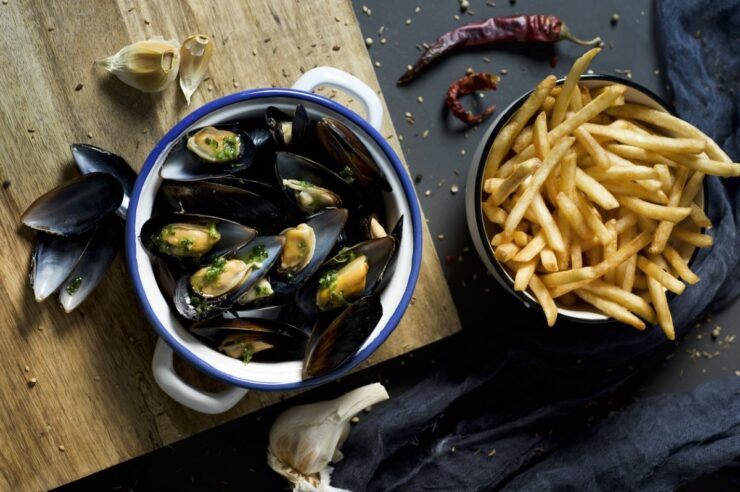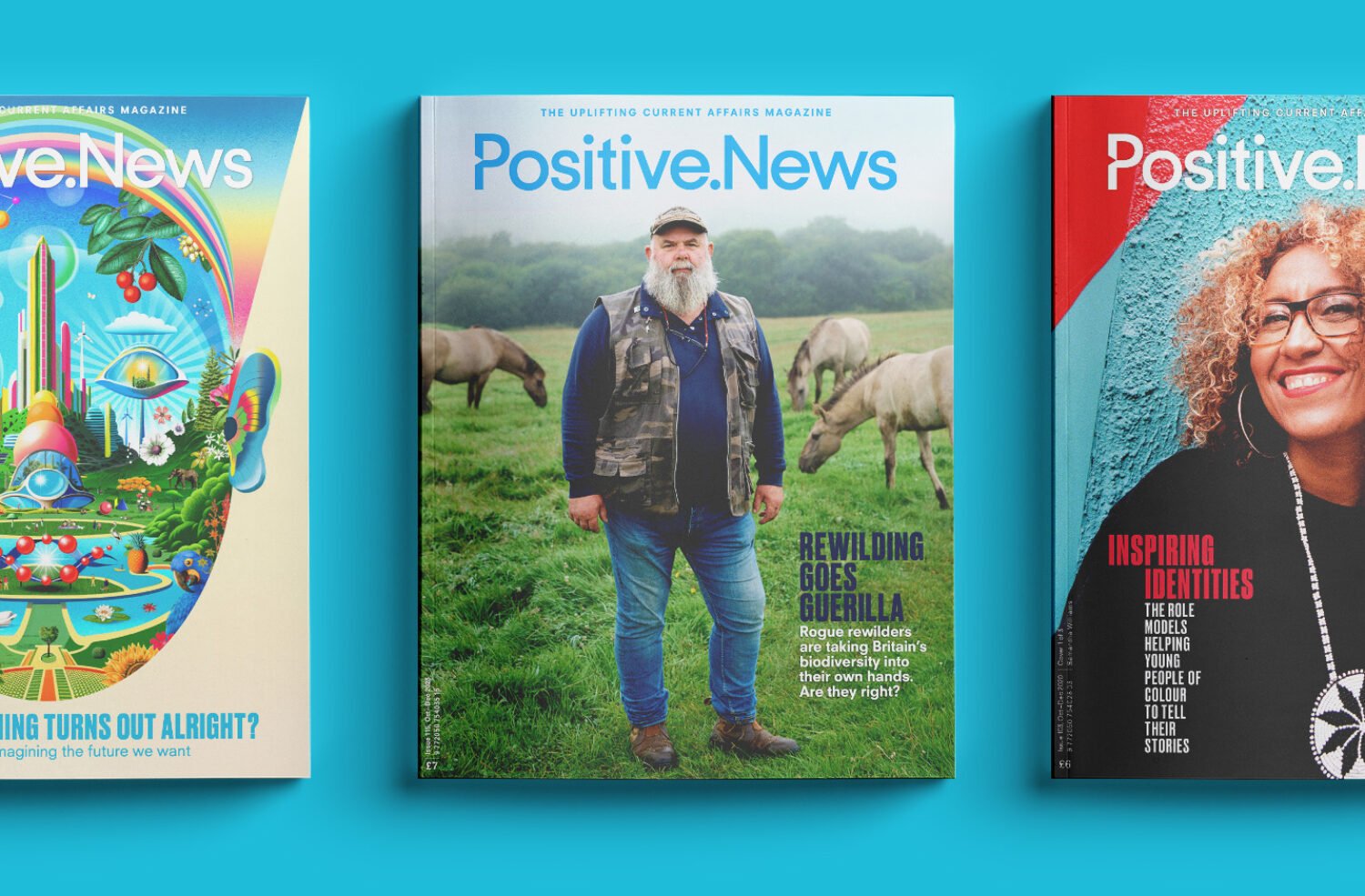What we eat and how we produce it has become a flashpoint for bitter debate in recent years, between farmers, environmentalists and health campaigners. But in Britain and beyond, new ideas are taking root that might just repair our broken food system
Feeling fed up? As in, fed up with the endless doomscrolling over the future of our food, our farms, our countryside?
You wouldn’t be alone. Whether you’re a farmer left marooned by shifting government policies, an environmentalist angered by the ravages of modern agriculture on our soils, wildlife and climate, or a health campaigner despairing at the way the food system seems designed to make us ill – you’re in good company.
It’s tempting to give up. But conversations this summer with a couple of that system’s most trenchant critics, along with a visit to the Groundswell Agriculture Festival, have given me glimpses of a few silver linings over the fields.
Here’s Guy Singh-Watson, founder of the pioneering Riverford Organic Farms in Devon. “We can feed 10 billion people on this planet,” he says, and do so “using sustainable agricultural practices that sequester carbon and boost biodiversity. But to do that, we do need to embrace complexity – and get away from this ‘100-acre field with a monocrop’ approach.”
The Riverford farms, including Singh-Watson’s own, are a living example of that complexity, with a wide variety of crops and space for wildlife. Now he’s exploring silvopasture, which will see him graze his beef cattle beneath walnut and hazelnut trees. Techniques such as this, he says, hold out the promise of “quadrupling the protein yield, while sequestering carbon, and increasing biodiversity”.
Henry Dimbleby, whose book Ravenous is essential reading for anyone wondering just how we made such a mess of feeding ourselves (and whose National Food Strategy was largely ignored by the government that commissioned it), agrees that we can do things very differently. A wholesale shift in our dietary habits, away from ultra-processed foods and over-reliance on meat and dairy, is key. There are signs of progress: meat consumption fell by 17% in the UK between 2009 and 2018. But it’s got to fall much further, warn climate groups.

Meat consumption fell by 17% in the UK between 2009 and 2018. Image: Illiya Vjestica
Some of the solutions to reducing farming’s footprint lie in technology, such as remote monitoring which can analyse soil productivity and spot crop problems on a tiny scale, and robotic weed control which plucks out individual weeds as they appear, and so avoids the need for spraying herbicides.
Dimbleby says that such monitoring can enable farmers “to look at the productivity of their fields on a foot-by-foot basis. So now they’re realising, for example, that the metre or two alongside the hedgerows doesn’t make money, so there’s no point putting chemicals on it.” And that means more wild plants grow there instead, offering a home for insects which eat pests, and so there’s less need for pesticides, and so on around a virtuous circle.
Dimbleby points to farms such as the Lockerley estate in Hampshire, which is embracing ‘traditional’ seven-year crop rotations, including cover crops, and reducing tillage, both of which help conserve soils and boost fertility naturally.

Novel crops like chickpeas could help British farms cut emissions. Image: Clark Douglas
This rise in regenerative agriculture was very much the theme of this year’s Groundswell Festival, an agricultural show founded by a Hertfordshire farming family who were determined to do things differently. Wandering around the stalls promoting everything from soil carbon analysis to chunky new tractors, I was struck by how many farm and estate managers seemed to have got the memo. As one told me: “Regenerative has to be the way forward. We’ve got to look after the soil; we’ve got to boost biodiversity; and we’ve got to make a profit. It might mean reduced yields, but we’ll spend less on inputs; hopefully we’ll get paid for carbon storage and hopefully make more money.”
Novel crops could play a part, too – novel for Britain, at any rate – like chickpeas and lentils, which were waving in the breeze on the demonstration plot of the National Institute for Agricultural Botany. They’re well suited to crop rotation systems, don’t require much fertiliser and could potentially thrive in the sort of intercropping system that is increasingly popular on regenerative farms. They also hold out the tantalising prospect of homegrown hummus and dal.
Regenerative has to be the way forward – we’ve got to look after the soil, we’ve got to boost biodiversity
More radical changes could be underway, of course, says Dimbleby, citing the excitement around lab-grown meat and precision fermentation as potential food sources of the future. They could revolutionise the food system’s impact on the planet, knocking out a stunning 70% of the demand for beef and dairy by the end of the decade, according to the RethinkX thinktank. The jury is still out, he cautions, on their long-term health impacts.
Meanwhile, he sees a subtler shift under way. “I’ve spent a lot of time with farmers,” he says, and many realise the wind is changing. “I was up on a sheep farm in Cumbria the other day, talking to a 90-year-old father and his 53-year-old daughter, who’s taking over and trying to take it in a different direction [away from the intensive grazing which has done so much damage to the land]. The older man was sceptical: ‘You can’t eat butterflies,’ he said. But she was determined. She was moving in and moving on.”
Martin Wright is a director of Positive News
Image: Emiel Molenaar
You’re the solution that Positive News needs
Our small, dedicated team is passionate about building a better alternative to the negative news media. And there’s never been a greater urgency to our mission.
But to invest in producing all the solutions journalism that the world is longing for, we need funding. And because we work in your interests – not those of a wealthy media mogul or corporate owner – we’re asking readers like you to get behind our team, by making a regular contribution as a Positive News supporter.
Give once from just £1, or join 1,200+ others who contribute an average of £3 or more per month.
Join our community today, and together, we’ll change the news for good.







